The biggest caveat to working in the digital industry is accepting that you will have to at least attempt to keep on top of the overabundance of new tools and platforms that are released on what seems like a daily basis; link checkers, video editing apps, social listening tools. But when does this level of invention start posing an obstacle to effectiveness? What is the point in being glamoured by a new social media channel if it doesn’t help you to achieve your goals?
Sometimes, the best way to harness the remarkable utility of digital is to balance innovation with steadfast dependability. An optimised email marketing campaign has the potential to be all-powerful, driving better returns on investment and higher levels of engagement. Since the early ‘90s, email has been a constant and universal method of communication, with approximately 150 billion emails sent every day.
As I’ve already mentioned in my Practical Guides to Content Marketing and SEO Metrics, the most fundamental element of any digital marketing activity is to define your goals. What do you want to achieve through your email marketing efforts? Subscriber engagement? Lead generation? Revenue generation? Whatever your objective, if executed effectively, email marketing can assist your success; 66% of internet users have made an online purchase as a direct result of email marketing versus 20% who purchased because of social.
This is because email marketing enables you to tailor your communications to the interests of a subscriber list who have already opted-in to read them. Unlike other digital channels, your audience is (somewhat) invested from the outset, and you have the opportunity to gain direct visibility in their inboxes and demonstrate your value to them.
Now all you need to do is know how to measure it all!
“66% of internet users have made an online purchase as a direct result of email marketing versus 20% who purchased because of social.”
Email Marketing Metrics: The Essentials
Click Through Rate
You may be wondering why the first metric summarised in this guide isn’t open rate – isn’t it synonymous with email marketing? Perhaps, but let’s look at it this way; would you rather measure the effectiveness of a promoted post on Facebook by how many likes it got, or by how many people clicked through to your website?
Open rates can be a valuable metric to track if you’re split testing subject lines, or comparing the performance of your newsletter on a weekly basis, but if you really want to gauge how recipients are interacting and engaging with each email you send, and whether or not they are converting, then click through is the metric for you. Click through rates can provide you with a detailed understanding of how many subscribers are engaging with your content, and the type of content they’re interested in consuming, be it a blog post or product offer. These are the insights that can really help you to adjust and optimise your email marketing efforts.
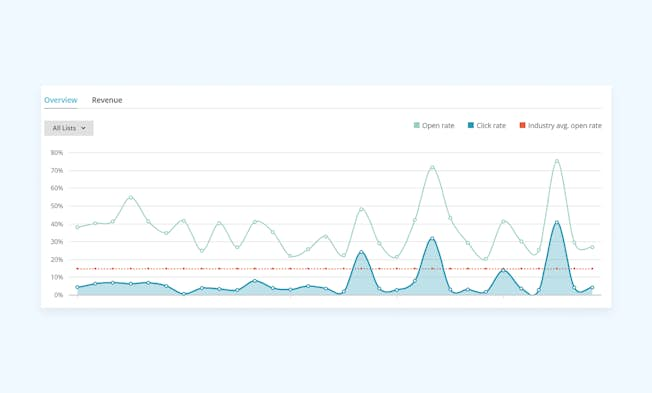
Comprehensive reports on your open and click through rates can be accessed via your Email Service Provider (at the Digital Marketing Institute, we’re big fans of Mailchimp in particular).
Conversion Rate
A logical progression from examining clicks would be to look at your conversion rate. A well-crafted marketing email should always contain a compelling Call-To-Action and now is the time to measure whether or not your subscribers have acted! Whether your CTA is to download a brochure or subscribe to a podcast, your conversion rate will help you to ascertain to what extent you are achieving your goals!
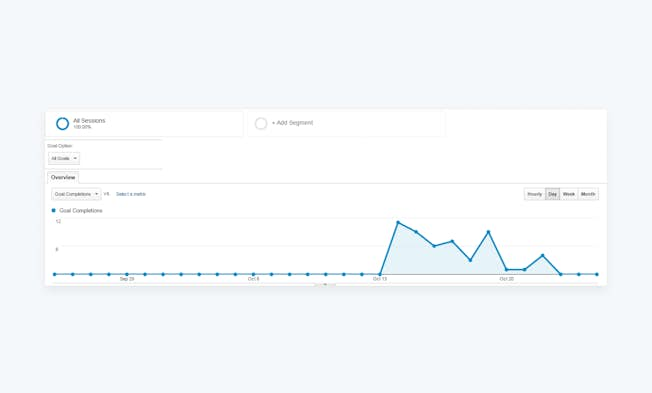
You can set up a view within Google Analytics to specifically monitor the traffic to your website that is generated by email referral. Better still, you can create goals to track conversions and further categorise your email marketing success!
Subscriber List Activity
I deliberately avoided titling this section “Subscriber List Growth” because it’s important to track both the growth and decline of your subscriber lists. List growth is essential because it extends your reach and maximises the likelihood of subscribers engaging with your emails and, ultimately, converting. Subscriber list decay, however, is inevitable; according to Marketing Sherpas, email marketing databases naturally degrade by about 22.5% each year.
If you notice a significant growth in your subscriber list over time, you should always try to pinpoint this success; are recipients particularly receptive to a content type or topic? Does the growth correlate with marketing activity you’re carrying out through additional digital channels? Similarly, if you’re experiencing more subscriber drop-off than you would like, you can analyse these factors as well as making sure that:
- Your subscriber lists are segmented properly to ensure that you’re targeting users with the most relevant email content possible.
- Your subscriber data is cleansed regularly to ensure old or inaccurate email.
- Re-engagement campaigns are carried out for unqualified leads who are more likely to opt-out.
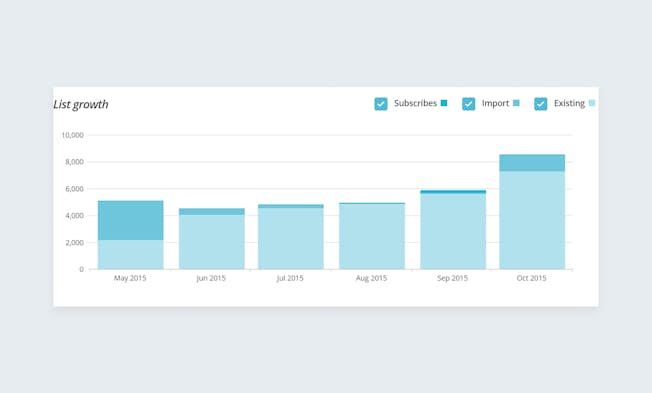
Information on the performance of your subscriber lists can be accessed within your Email Service Provider.
Bounce Rate
A classic metric, if digital marketing metrics could be described as classic… Bounce rate is the percentage of emails that could not be delivered to subscribers and were sent back to your Email Service Provider. But did you know that there are two kinds of bounces that you should be monitoring (you probably did, I’m just trying to make myself sound knowledgeable)?
Hard Bounces: messages that are permanently rejected due to an invalid email address or because the recipient’s server has blocked your server.
Soft Bounces: messages that are temporarily rejected because the recipient’s inbox is full, the server isn’t working, or the email exceeds the size limit set by the recipient or Email Service Provider.
Bounced email, regardless of how comfortable they sound, bring us back to the essential concept of cleansing subscriber data. You should remove any hard bounce email addresses from your subscriber lists immediately, or run the risk of damaging your sender reputation, as your email might be triggering spam filters! It’s also helpful to check if your hard bounces (if you have any) are coming from the same domain; if they are, it might mean that a specific ISP or company server is blocking you, something that can be easily and politely resolved! Unless you’re spamming. Obviously.
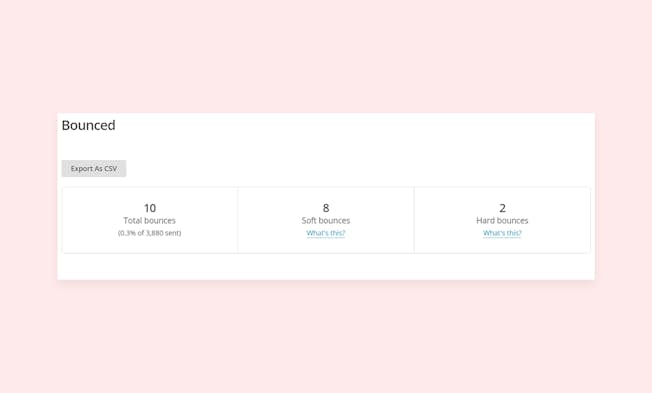
A breakdown of bounces per email campaign can, like the rest of the good stuff, be reported on within your Email Service Provider. You can even find out which email addresses bounced and amend or remove them accordingly.
Additional Email Marketing Insights: Dig A Little Deeper
I’ve already outlined the essential metrics that will provide you with a rounded overview of your email marketing effectiveness, but your reporting doesn’t have to stop there. Depending on how serious you are about ensuring ongoing success for your email marketing campaigns (which I hope is deadpan-Arnold-Schwarzenegger-in-every-film-he-ever-starred-in-apart-from-maybe-“Twins” levels of serious), you can garner a lot more insight with a little extra effort. I’ve included some supplementary email marketing metrics that you can monitor in order to enhance the performance of your emails and achieve your goals.
Email Forwarding
The rate at which your subscribers share and forward your emails to their own contacts is a valuable insight for a number of reasons; it lets you know the extent to which subscribers were entertained or engaged by your email content and the extended reach that content can enjoy. Tracking forwards also provides you with an additional opportunity to grow your subscriber list with contacts who are predisposed to receiving and reading your emails. You can generate new leads by encouraging your readers to share your email or forward to a friend; Email Service Providers like Mailchimp allow you to incorporate a “Forward to a Friend” button or link into your email template.

Information on the number of times subscribers forward your emails can be found within, you’ve guessed it, your trusty Email Service Provider! Nevertheless, it’s important to note that this metric, while incredibly useful, doesn’t paint a complete picture. Email forwards don’t take into account users who copy and paste links to your email within emails of their own, or instant chat messages, for example. Nor do they encompass recipients who use the native forward button in their own email client. So while this metric is a useful one, we just have to accept that there is a level of data that we’ll never be able track. It’s kind of like the email equivalent to “dark social”, it just sounds a little less ominous!
Engagement
Remember why I said that open rates aren’t nearly as important to measure as clicks? You should, it was only 1000 words ago! Essentially, the level of understanding you can gain from analysing how subscribers interact with your emails is a lot more detailed and meaningful than whether or not they opened it in the first place. If a recipient engages with your email, then you can be confident in the knowledge that you are on your way to achieving your email marketing goals. Full blown arrogance stems from knowing the depth of that engagement and how close you really are to email marketing eminence! Email engagement as a metric can be broken down and analysed in two ways:
Engagement based on time and day
Everyone wants to know the ideal time of day and day of week to send their marketing emails; it makes sense to give your campaign the best fighting chance! I’d bet that this is something you’ve Googled before, and if you have, you’ll know that it’s a topic of contention about which people have vastly differing opinions. In reality, there is no magic time or golden hour, it varies based on a number of factors, from industry to geography to customer persona. That’s why it’s useful to test your success! Experimenting with your scheduling, at different times of the day and different days of the week, can provide you with comparative data that lets you know when subscribers are more and less likely to engage with your emails.
Time spent engaging with email content
When it comes to content marketing, we can measure how long a user spent engaging with content on a particular web page using Google Analytics. With email marketing, the length of engagement with email content is equally important, and it goes without saying that the longer a subscriber spends reading your email, the better. This kind of insight will allow you to tailor the content of your emails to guarantee maximum engagement.
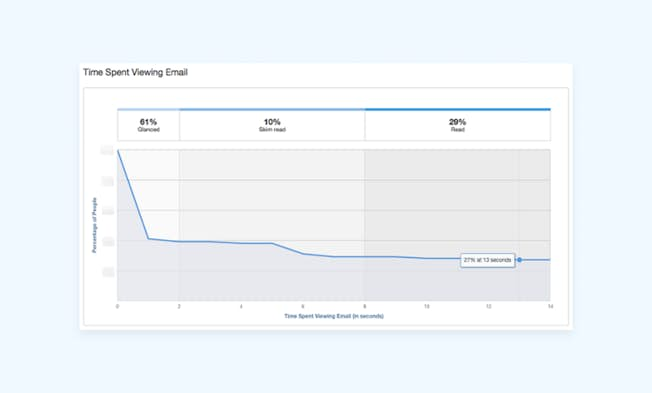
If you send your emails using HubSpot, for example, they will report on the time a subscriber spent viewing your email, and break it down into categories (glanced, skim read or read) based on how long they spent viewing it.
Device Type and Email Client
A key principle of email campaign design is to test how that email displays on both mobile devices and different email clients, both from a creative and content perspective.
Recipients are increasingly using mobile devices to view email content due to its flexibility and expediency; last year, 53% of email opens occurred on a mobile phone or tablet. That’s why it’s important to bear your mobile audience in mind when you’re designing your marketing emails.
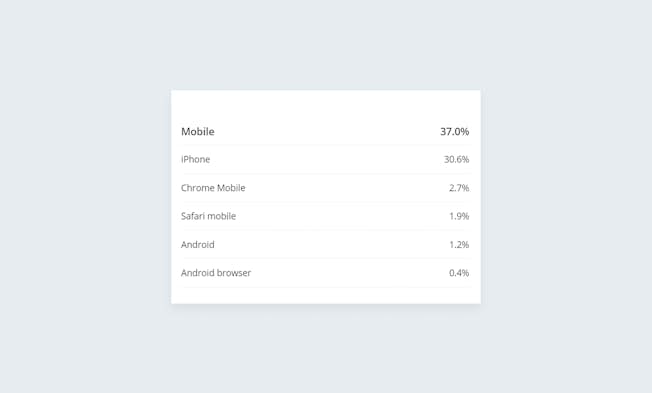
Most Email Service Providers will show you how many users actually view your emails on mobile and which devices they use in particular, and you in turn can use this information to inform your design decisions.
When it comes to email clients, different clients support and display different email content in different ways. Sound annoying? It doesn’t have to be! Embrace these differences by embracing email client data! Not only can you use your Email Service Provider (honestly, I’m a big fan) to test how your email will look to recipients using different clients, many ESPs report on your subscribers’ preferred email clients too!

Improve Your Email Marketing Performance
Make sure you’re proud of your measurements!
- Regularly cleanse your subscriber data to ensure it’s up-to-date and accurate. Avoid those bounces where possible!
- Segment subscriber lists so you can be confident that you’re targeting your audience in a relevant and efficient way to maximise engagement.
- Create concise, compelling content. Be mindful of your target audience and what they want or need. Try to engage them in a way that brings them value, and don’t forget to use personalisation! It’s all in the name of engagement.
- No spamming.Be mindful of your use of formatting, language, attachments and imagery. GO EASY ON THE CAPS AND EXCLAMATION MARKS!!!!!
- Just in case I didn’t stress it enough throughout this article, your Email Service Provider can help you with everything from design to scheduling, so make sure you utilise every feature and function!
- This wouldn’t be a practical guide to metrics if I didn’t reinforce the importance of testing! From split testing subject lines, to measuring engagement, analytics provide you with a platform to achieve your goals and perfect your performance.
- Categories:
- Articles
- Email Marketing
- Data and Analytics
Upgrade to Power Membership to continue
your access to thousands of articles, toolkits, podcasts, lessons and much much more.
Become a Power Member- Login
- View Courses
- - - -
- Courses
- Resources
- - - -
- My Account
- Change Password
- Logout




